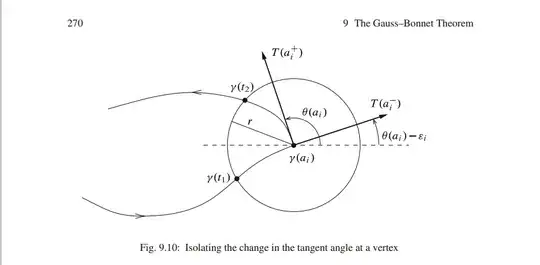Let $\gamma : [a,b] \to \mathbb{R}^2$ be a continuous map which is injective on $[a,b)$ ( For example, simple closed curve ). Let $a_i \in [a,b]$ and $\delta>0$ be a small positive number. Then note that the image under $\gamma$ of $[a,b]-(a_i -\delta , a_i+\delta)$ is a compact set that does not contain $\gamma(a_i)$.
Then, can we choose $r$ small enough that $\gamma$ does not enter $\bar{B_r}(\gamma(a_i))$ except when $t\in (a_i -\delta , a_i+\delta)$ ?
In fact, this argument appears in the eleventh paragraph of the John Lee's Introduction to Riemannian manifolds, proof of the theorem 9.1 ( Rotation index theorem ).
C.f. For a supplement, let's look at the next image :
Such a ball of radius $r$ exists?
Can anyone helps?
